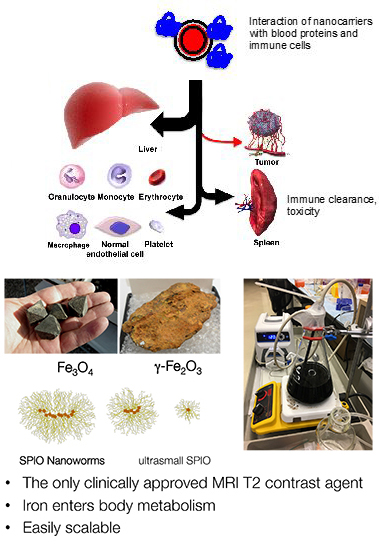Translational Bio-Nanosciences Laboratory: Dmitri Simberg, PhD
The Translational Bio-Nanosciences Laboratory (TBNL) is pursuing the following directions using a variety of multidisciplinary approaches:
- Understanding mechanisms whereby engineered nanoparticles activate complement system (using biochemistry and molecular biology approaches)
- Understanding mechanisms of deposition of nanoparticles in skin, tumors and bone marrow metastases (using in vivo perfusion, imaging and intravital microscopy)
- Design of safe, translational iron oxide nanoworms for MRI and cancer therapy
- Drug delivery and in vivo sensors using engineered red blood cells
- Study of circulating tumor cells and microparticles isolated from the blood of cancer patients (using engineered gas microbubbles)
We value random discovery, serendipity, and power of observation. At the same time, we pursue systematic studies using a variety of methodologies, from serum biochemistry, to in vivo pharmacology to population studies in healthy persons and in patients. We are always looking for enthusiastic and energetic individuals.
Dmitri Simberg PhD
Professor
Colorado Center for Nanomedicine and Nanosafety Co-Director
Email:[email protected]
Phone:303-724-8241
 | Hanman Gaikwad, PhD Hanmant Gaikwad received a Master degree (M.Sc.) in Organic Chemistry from the Shivaji University, Kolhapur in 2005. He completed his PhD in Organic and Medicinal Chemistry from the CSIR-Indian Institute of Chemical Technology (IICT), Hyderabad, India in 2013. Later, in 2013, he joined as a Post-doctoral researcher in Dr. Galia Blum's research group at School of Pharmacy, Hebrew University, Jerusalem. He worked on molecular imaging of cancer using X‑ray computed tomography with protease targeted iodinated activity-based probes. Then he joined the Simberg Lab as a postdoctoral Associate in December 2017. His research work focuses on development of new class of small molecules, nanoparticle conjugates, lipid conjugates and antibody conjugates with cleavable linkers for targeted drug delivery and molecular imaging. |
 | Ernest Groman, PhD Dr. Groman, possibly the oldest postdoc on campus, earned a BS in mathematics from the University of North Carolina-Chapel Hill and a PhD in biochemistry from the University of California-Berkeley. After postdoctoral studies at Massachusetts General Hospital and Harvard Medical School, he cofounded Advanced Magnetics and BioPhysics Assay Laboratory. He is the lead inventor of Feraheme, a drug used to treat iron deficiency anemia and as an experimental MRI contrast agent to study inflammation (following chemotherapy), vascular disease and lymphatic involvement in various cancers. His interests include translation of grant funded projects into products, drug delivery using nanoparticles, cell labeling with nanoparticles, development of dual label contrast agents and applications of magnetic fields to improve drug delivery. |
 | Sarah Jacques Sarah graduated from the University of Toledo with bachelor's degrees in molecular biology and chemistry. She spent her first few years in research as an undergrad studying plant virology. She joined the Simberg lab in October of 2021 as a professional research assistant. At work, Sarah enjoys using confocal microscopy to observe nanoparticles and how they interact with different components of the immune system. Outside of work she enjoys rock climbing, hiking, yoga, gardening, her cat named Pistachio, and good coffee.
|
 | Yue Li, MS Yue Li received her Bachelor’s degree of Pharmaceutical Science from Shandong University in 2018. She completed the Master’s degree of Pharmaceutical Science from University of Colorado Anschutz Medical Campus in 2021 and then continued pursuing PhD degree in the same school. She loves traveling and exploring the world in her free time. |
 | Halli Benasutti, BSc, Research Assistant |
 | Barbara Brenneman, BSc, PharmD Candidate |
 | Christopher Bull, PharmD Candidate Student |
 | Fangfang Chen, PhD, Visiting Research Professor (Jilin University, China) |
 | Kevin Cheng, BSc, Research Assistant |
 | Wenjin Cui, PhD, Postdoctoral Scholar |
 | Paulina Do, PharmD Candidate |
 | Geoffrey Gifford, BSc, Professional Research Assistant |
 | James Griffin, BSc., Research Associate |
 | Swetha Inturi, PhD, Postdoctoral Associate |
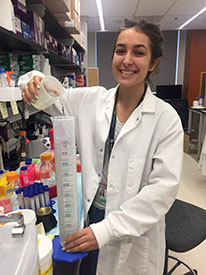 | Jessica Jones, BSc, PharmD Candidate |
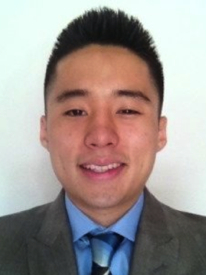 | Amose Kim, BS, Research Assistant |
 | Hye Hyun (Sally) Kim, undergraduate student Chemical and Biological Engineering University of Colorado Boulder |
 | Laren Lofchy, PhD Candidate |
 | Ritish Mittal, BSc, Research Assistant |
 | Rajesh Mukthavaram, PhD, Postdoctoral Scholar |
 | Abilash (Abi) Prabhakaran, Cherry Creek High School Student |
 | Ping Ren, MD, PhD, Visiting Scholar |
 | Laura Restrepo, MSc, Research Assistant |
 | Guixin Shi, PhD, Postdoctoral Scholar |
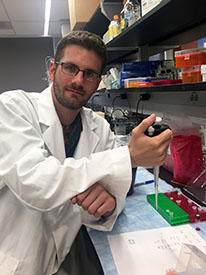 | Weston Smith, PhD, Postdoctoral Associate |
 | Huy Tran, Undergraduate Bioengineering Program, CU Boulder |
 | Vivian Vu, Professional Research Assistant |
 | Guankui Wang, PhD, Postdoctoral Associate |
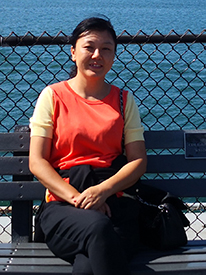 | Chunyan Yang, MD, PhD, Visiting Scholar |
- Clean up after yourself and maintain a clean and orderly lab space.
- Safety is very important: wear goggles, a coat, and gloves, and work in the hood whenever necessary.
- Dispose of solvents and chemicals in the bottle in the hood; never into the sink!
- Work with volatile solvents in the hood only.
- All reagents should be put back in their designated place after use.
- If running low on a reagent, please order it before it runs out.
- Write everything you do in the lab book and sign and date it each day. Never omit any details – even the small ones!
- Document experiments with images and quantitative data; you can include attachments to the lab book, including printouts and gels. Summarize the experiment, including method, result and conclusion, preferably in PowerPoint.
- Each experiment gets the following: year-month-day-initials-description, for example.
Advice for Scientists
- If there is a problem, it is OK to admit it and ask for help.
- Always try to quantify your observations. Pictures are nice to publish, but only quantitative data can give you confidence in the results.
- Always try to include positive and negative controls.
- The experiments should be run at sufficient number of replicates (3 or more) and repeated for statistical power. You must be sure that the result is correct!
- Stay focused on the project. Be persistent: don't give up easily
- 10-20% of time should be improvisation and innovation; Try crazy things, and don't be afraid to make mistakes!
- Read literature periodically, brainstorm ideas, go to seminars and conferences, listen to news – you never know where new ideas can come from!
- It is OK to argue and defend your point of view.
- If you don't have time to do it right, do you think you will have time to do it over?
- "Never leave that till tomorrow which you can do today." - Benjamin Franklin
We are a green lab!
We believe that whatever we do in the lab has an environmental price. We do science, which is a cool thing, and it benefits humankind. However, science can take a serious environmental toll. For example, each chemical hood uses as much energy as the average American household. The chemicals that we order and synthesize in the lab also use a lot of energy to make them. And chemicals that aren’t discarded properly can pollute water sources and kill marine life.
So, in our lab, we strive to be sustainable and have embraced the Reduce, Reuse, and Recycle model to be an environmentally responsible as possible. Here are some common tips we use in our lab that you could use, too:
- Reduce chemical use: Don't order a chemical before checking if someone else might actually have it. For this purpose, we catalogue all of our chemicals. Also, ask colleagues if you can borrow the chemical from them.
- Reduce electricity use: After hours and whenever possible, turn off centrifuges, equipment, chemical and tissue hoods, and lights. Don't leave freezer and fridge doors open for an extended period of time.
- Recycle: Never dispose of chemicals or solvents in the sink, including methanol-containing buffers; use special containers as specified by the safety department. Dispose recyclable items in the recycling bin.
- Reuse: Try to buy used equipment whenever possible and reuse lab supplies as much as possible.
